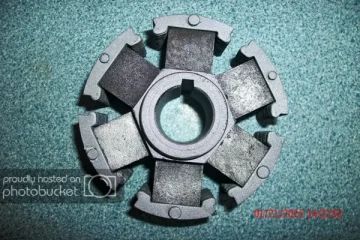- Joined
- Dec 8, 2017
- Messages
- 147
I had an electrical issue earlier this year with my 1974 Commando 850 which, with considerable help from forum members, was ultimately diagnosed as a bad stator. Sure enough, when I pulled the primary cover off to investigate, the stator epoxy? coating was cracked and looked like it was partially melted at one location. A new stator is definitely a must. However, my question now relates to the existing rotor. The rotor came off easily and looks good physically. No obvious signs of damage. The rotor will hang unsupported from a wrench handle so the magnets appear to be holding their magnetism as well. I'm wondering if it's false economy to re-use a 46 year rotor as opposed to spending $140.00 CAD for a new rotor, or if buying a new rotor is an unnecessary expense given that the old one seems fine?


